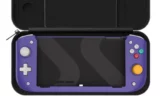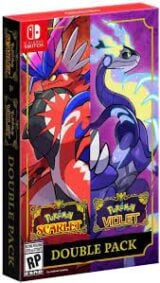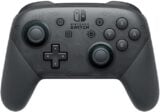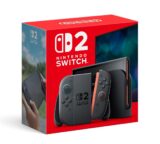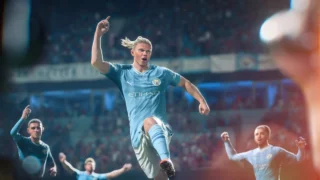Picross developer Jupiter on nearly 30 years of puzzling prowess
In a rare interview, the studio’s president and managing director explain why it’s still hip to be square

Update: We’ve slightly amended a comment about pitching a 30th anniversary Picross game at the request of Jupiter.
Jupiter Corporation doesn’t often speak to the press.
Even in its native Japan, interviews with the Picross studio are few and far between, despite its long-running series being considered one of the greatest video game puzzle franchises ever made.
While it has worked on numerous other games over the years – including both Pokémon Pinball games, Spectrobes, the Pokémon Mini handheld and co-development duties on Kingdom Hearts: Chain of Memories and The World Ends With You – Picross remains the series it’s most closely associated with.
The studio was formed in 1992 by founder (and still current Jupiter chairman) Makoto Nakayama, who was working as a business developer for a company that sold development tools.
One day, Nakayama attended a lecture by Nintendo president Hiroshi Yamauchi, who asked attendees: “Why don’t you enter the games industry?”
Noting that numerous games were selling more than 1 million copies, Yamauchi explained: “Don’t you realise how much more likely it is to win 100 million yen by creating software than it is winning 100 million yen from a lottery ticket?”
Inspired, Nakayama set up Jupiter Corporation and hired Norichika Meguro, the company’s first employee – and one of two men sitting across from us.
According to Nakayama, although Nintendo trusted him because he had worked with him before, it still treated Jupiter like a completely new company, and so – at a time when Nintendo still had stricter control over which third parties released games on its systems – he still had to pitch it game ideas.
At the time, pen-and-paper nonogram and ‘illustration logic’ puzzles were popular, so Nakayama proposed a video game version, an idea Nintendo welcomed.
Since Jupiter had little experience in game development, Nakayama was introduced to Tsunekazu Ishihara, the vice president of Earthbound co-developer Ape (and later founder and CEO of Creatures Inc).
As Jupiter developed this new nonogram game, Ishihara helped to guide its development, while Shigeru Miyamoto oversaw the process from Nintendo’s side. According to Nakayama, it was also Miyamoto who proposed a literal game-changer: the game should have Mario in it.
Mario’s Picross was released on the Game Boy in 1995, and while it failed to take off in the West, it sold well in Japan, spawning further sequels.
In the nearly three decades since, Jupiter has become synonymous with Picross, having released more than 30 Picross games in that time. The series returned to the West with Picross DS in 2007, and since then, most games have enjoyed global releases.

In recent years, the studio has been focusing on digital-only Picross games, with the Picross e series on the 3DS eShop and the Picross S series on Switch. It’s an impressive run for any franchise, let alone a puzzle series.
And yet, despite its continued success, Jupiter remains something of an enigma to some, given how rarely it speaks publicly.
That’s why, as we sit across from managing director Norichika Meguro and president Hirofumi Murakami, we’re keen to take this rare opportunity to get more information on how Picross is doing, how the series’ regular collaborations work, and what’s in store for the future.
Could you start by telling us what’s going on at Jupiter right now?
NORICHIKA MEGURO: We’re currently working on work-for-hire projects and our self-developed projects. The self-developed ones obviously include the Picross series – with the latest being Picross S9, which was released on the Switch in April – as well as Working Zombies, which we’ve released on Switch and Steam.
Last year we also released Picross X. The Picross series is typically about puzzle-solving, but we recently thought, ‘why don’t we add an action-centric element to the puzzle solving’, and that was the concept of Picross X.
HIROFUMI MURAKAMI: With regards to our work-for-hire titles, last November we developed Fitness Circuit on Switch, so now Jupiter is a company that’s good at creating exercise and fitness-themed games.
Although Jupiter mainly creates standalone Picross series, such as the Picross S games and the Picross e games on 3DS before that, you do occasionally make crossover Picross titles too (Twilight Princess, Pokémon, Final Fantasy, Sanrio, Mega Drive). How do these collaborations come about?
MEGURO: It’s almost always us who approaches the licence holder, going ‘hey, why don’t we do this’.
Initially we usually think about something straightforward, like a standard Picross game with the collaboration integrated. But with the Final Fantasy and Pokémon Picross games, they wanted to make sure each universe was expressed well within the Picross universe.
That’s why those games have a different structure that makes it really feel like a Final Fantasy theme, and really feel like a Pokémon theme.
When you approach these licence holders, are they usually very open to doing Picross collaborations, or is it sometimes difficult to persuade them?
MURAKAMI: It’s not easy! But with the Final Fantasy one it was actually Square Enix who approached us and asked: ‘Why don’t you guys create a Final Fantasy-themed Picross on mobile? It could be interesting, would you maybe like to put a proposal together for us?’
For Pokemon, we were just lucky because it was very good timing, but the bar was very high to make that happen.
Are there any dream Picross collaborations you’d like to work on that you haven’t been able to yet?
MURAKAMI: There have been many proposals that didn’t get there.
MEGURO: The goal here is to make sure that Jupiter reaches out to the existing fanbases of Final Fantasy fans, Pokémon fans, by introducing Picross-themed IP. That’s the objective of us doing this. But yes, there are many proposals we’ve submitted that we were not able to make.

In terms of the Final Fantasy collaboration, I note it was called Pictlogica Final Fantasy, whereas most of your other collaborations have kept the Picross name. Is this something to do with it being released on mobile, and Nintendo having some sort of control over the Picross trademark?
MURAKAMI: Nintendo owns the Picross trademark and we borrow it from them, but we own the game system.
MEGURO: The first game in the series was Mario’s Picross on the Game Boy, which was released 28 years ago. At the time the puzzle itself was known as a nonogram, and was only played on paper. The chairman of Jupiter at the time reached out to Nintendo and said, ‘why don’t we make a game based on this’, and that’s how Mario’s Picross was made.
Ever since then, we’re confident that we’re the best Picross creators in the world, because we’ve been working on this series for nearly 30 years.
So given that the Final Fantasy collaboration was released on mobile, does that mean that Jupiter could theoretically release Picross games on other consoles, as long as it isn’t called Picross?
MEGURO: Yes, we’re certainly open to exploring potential collaborations with any popular IP, but any Picross game outside of the Switch would have to be renamed, because we couldn’t call it that.
Because most of the Picross games these days are digital-only, we had a situation earlier this year where the 3DS eShop closed, essentially delisting nearly 15 of your games at once. Was it frustrating to see all of your titles disappearing like that, and how do you feel about the preservation of your games in the future?
MURAKAMI: We have a way to preserve the data, so we have a storage system that keeps the older titles, including the 3DS Picross e series, at our studio.
Because of that, we want to utilise these old games in some way in our future plans.
Is there any interest in making Picross more of a live service title in future, releasing a single game called Picross and updating it regularly with new puzzles and themes?
MEGURO: We have internal discussions about allowing players to download puzzles as DLC, but we figured that it’s better to put the game out as separate instalments instead of packing it as one single unit and allowing users to keep downloading new content inside that.
Once you allow that user to keep downloading from a single unit, you have less of a chance to appeal to new users. So it’s better for us to keep publishing separate titles as a series.
Nintendo has its Switch Online service, and seems to enjoy success with Tetris 99, which is part of that service and regularly updates. Is that a potential direction you’d like to take in the future, maybe collaborating with Nintendo to add a version of Picross to Switch Online that offers things like timed events?
MEGURO: The older Picross games – up to the Nintendo DS titles – are owned by Nintendo, and they have the publishing rights, so it’s up to them to decide if they want to put the game on Switch Online. In fact, Mario’s Super Picross is already there in the SNES library on Switch Online, so you can play that on there.
In terms of the franchise after the 3DS, that’s up to them to decide.

But the classic games aside, would you be interested in doing a new live service version?
MURAKAMI: Actually, we were trying to achieve that with Picross X, but we figured that the server costs were really high, so it ended up where it is now.
A lot of people know Picross best from its Nintendo collaborations (Zelda and Pokémon). Is that something we could maybe expect to see more of in the future?
MEGURO: Absolutely. We’ve pitched Nintendo many times. It’s not easy to get a ‘yes’ from Nintendo, but we’re trying.
What does Nintendo look for in these negotiations? Are they looking for an original idea, for example? What determines what will make them agree to a new collaboration?
MEGURO: The last title we co-developed with Nintendo was Picross DS, which was the last full retail title. We actually pitched Picross 2 to Nintendo, but they asked: ‘Are you sure you’re going to reach 1 million sales?’
We weren’t able to answer this, so that was the first time we did a licensing deal instead of a direct collaboration, and that’s how the 3DS version of Picross was made.
When we asked fans on social media what we should ask you, the overwhelming response was to ask when you’re going to make another Zelda Picross (Twilight Princess Picross on 3DS was made available as a Club Nintendo / My Nintendo reward).
MEGURO: We did collaborate with them with the Club Nintendo version.
MEGURO: We’re not pitching to Nintendo as much as we used to, knowing that it’s not easy to convince them to say yes. Our expectation is that as long as the Picross game is based on one of their IPs, they’re going to be the publisher, not Jupiter. So it’s very difficult to turn it around.

So is it the case that perhaps these collaborations are at odds with your own business interests?
MEGURO: Actually, we’re eager to make these collaborations happen. But it’s pretty much down to Nintendo’s judgement, and the final say is on their side, not ours.
There have now been nine Picross S games on Switch. When you look at the sales figures for each individual entry, is there an indication that the fanbase is growing?
MEGURO: Yes, certainly. New people are playing the game on Switch. The Pokémon Picross game became one of the important triggers of this, and introduced the game to a lot of new players via a free-to-play title with in-app purchases.
With the S series, when we look at the sales numbers… Picross has traditionally been more popular in Europe than in the US, but it’s the other way around now. We now make more money in the US than in Europe.

Now that we’re approaching the series’ 30th anniversary, what do you believe is the secret to the longevity of Picross?
MEGURO: I’m not exactly sure if I’m answering your question, but the overall reason is that it’s still fun. It’s fun to play Picross!
But it also needs to be accessible, easy to play, provide a stress-free experience, and have a high quality graphical level. So when we’re working on a Picross game, we have to make sure it’s visually beautiful too.
When you design puzzles, what comes first – do you have the idea of the item in your head, or do you make the puzzle first then think, ‘oh, that looks like a car’?
MEGURO: That’s a very philosophical question, and a difficult one to answer. [laughs]
Fundamentally, we’ve received so much feedback from different demographics, and because of that we just want to make sure that the game’s UI is fundamentally easy to grasp.
Do you have a final message for the Picross players?
MEGURO: Our last message to the fans is to thank you very much for picking up and playing Picross. The series will certainly be coming to the new hardware down the road, so please look forward to it.
Especially as we make the Picross S series, the internet allows us to get direct feedback from users, which certainly helps us evolve the series in a faster way. So we really appreciate the feedback from the fanbase.
Picross S to Picross S9, Picross X, Picross S: Mega Drive & Master System Edition, Picross: Lord of the Nazarick, Kemono Friends Picross and Working Zombies are all currently available on the Switch eShop.
Super Famicom title Mario’s Super Picross is currently available in Nintendo Switch Online’s SNES library. Mario’s Picross and Picross 2 have yet to be added to its Game Boy library.
